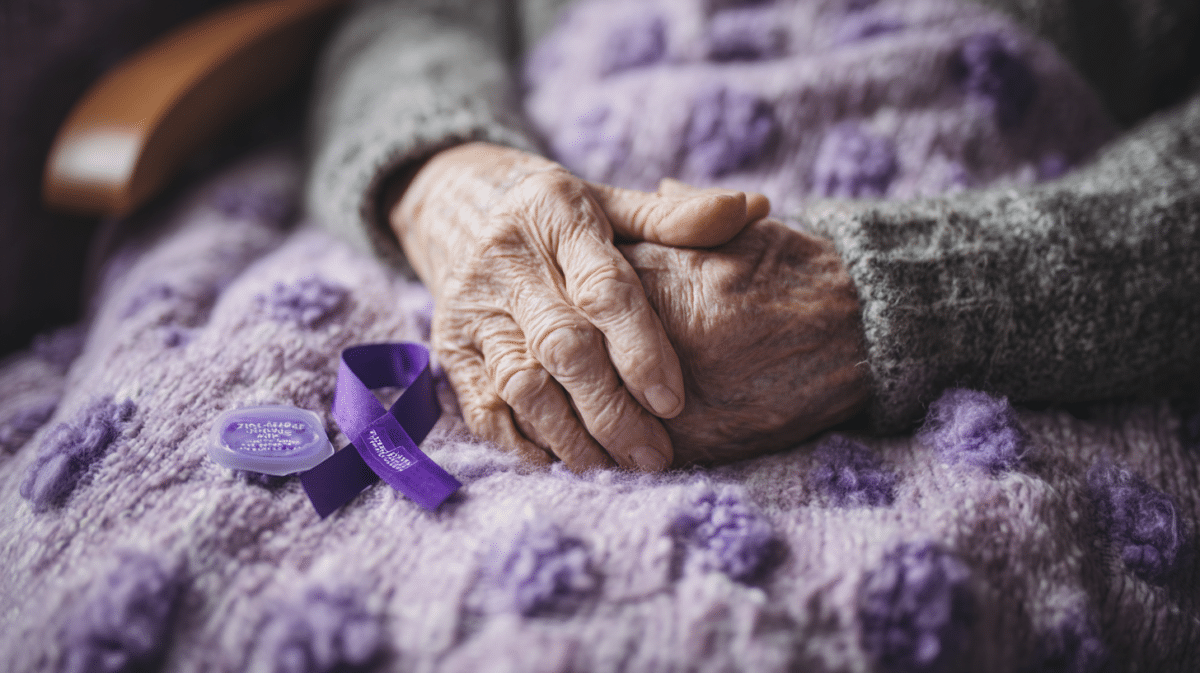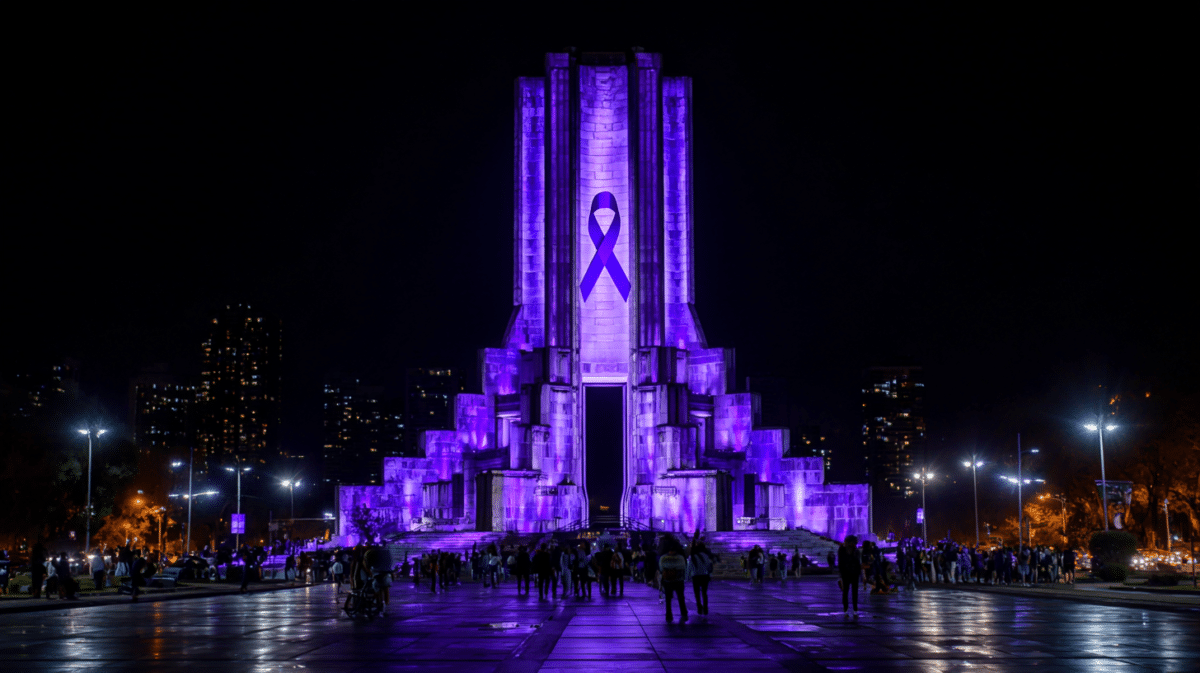The Power Behind the Purple Cancer Ribbon
The purple cancer ribbon is more than just a colored strip of fabric—it’s a symbol of strength, remembrance, and a call to action. Seen during awareness months, marathons, charity drives, and social campaigns, this ribbon carries weight. But what exactly does it represent? Is it for one disease or many? And what’s the difference between purple, lilac, and lavender when it comes to medical ribbons?
Unlike some awareness symbols that represent a single cause, the purple ribbon covers a range of medical conditions and societal issues. Most prominently, it stands for pancreatic cancer, but it’s also associated with Alzheimer’s disease, lupus, domestic violence awareness, and epilepsy, among others. Depending on the organization or country, the same color may signal a different mission—making context vital.
This article dives into the medical meaning, historical background, science, and advocacy efforts behind the purple ribbon. Whether you’re a caregiver, survivor, healthcare professional, or advocate, understanding this symbol can help drive meaningful conversations, fundraising, and support. We’ll explore how purple became such a powerful visual message—and what you can do to amplify it.
Table of contents
- The Power Behind the Purple Cancer Ribbon
- PART 1: What the Purple Cancer Ribbon Symbolizes
- PART 2: Which Cancers and Diseases Use the Purple Ribbon?
- PART 3: Purple Ribbon in Pancreatic Cancer Awareness
- PART 4: Purple Ribbon for Alzheimer’s and Dementia
- PART 5: What Does the Lilac Ribbon Mean vs. Purple?
- PART 6: Scientific and Medical Backing of Ribbon Awareness Campaigns
- PART 7: Global Organizations Behind the Purple Ribbon Movement
- PART 8: Events, Months & Campaigns Tied to the Purple Ribbon
- PART 9: How to Support, Donate, and Advocate With the Purple Ribbon
- FAQs About the Purple Cancer Ribbon
- Conclusion: A Color That Connects Across Causes
- Scientific Sources List
PART 1: What the Purple Cancer Ribbon Symbolizes
The History and Evolution of Cancer Ribbons
Awareness ribbons originated in the 1970s and 1980s, first appearing in military and social movements. The iconic red ribbon for HIV/AIDS helped popularize the format, and in 1991, the pink ribbon for breast cancer sparked global recognition. Following these campaigns, more diseases adopted their own ribbon colors to increase visibility and community engagement.
The purple cancer ribbon gained momentum as a symbol for pancreatic cancer in the early 2000s. Over time, it expanded its meaning across multiple illnesses and causes, including:
- Pancreatic cancer
- Alzheimer’s disease
- Lupus
- Testicular cancer
- Crohn’s disease
- Domestic violence awareness
- Epilepsy (in some regions)
Because of its broad scope, purple is often described as a “unified symbol of remembrance and hope”—especially for diseases that are underfunded or poorly understood [Source 1].
Purple’s Psychological and Symbolic Role
Color psychology plays a key role in why purple was chosen for these causes. As a color, purple traditionally represents:
- Wisdom and dignity
- Courage and strength
- Remembrance and mourning
- Spirituality and advocacy
In awareness campaigns, these symbolic meanings align closely with the emotional journey of patients and caregivers. Purple also stands out visually, making it effective for awareness walks, fundraising, and public displays [Source 2].
In medical symbolism, lavender and lilac variations have also emerged. Lavender is sometimes used for all cancers combined, while lilac may be linked to general cancer awareness in certain campaigns [Source 3]. These distinctions will be explained in-depth in Part 5.
“The purple ribbon is more than just a color—it’s a message of solidarity across battles, from cancer to caregiving, from remembrance to resilience.” – American Cancer Society [Source 4]
PART 2: Which Cancers and Diseases Use the Purple Ribbon?
Cancers Linked to the Purple Ribbon
The purple cancer ribbon is most widely recognized for its association with pancreatic cancer, a disease known for its aggressive nature and late-stage diagnosis. However, it’s not limited to that one cause. Over the years, purple has also been adopted for various other cancers and health-related conditions, especially those with low awareness or high mortality rates.
Here’s a list of medical causes currently associated with the purple ribbon:
| Condition | Ribbon Color | Awareness Month |
|---|---|---|
| Pancreatic Cancer | Purple | November |
| Testicular Cancer | Purple | April |
| Thyroid Cancer | Purple + Teal | September |
| Hodgkin’s Lymphoma | Violet/Purple | September |
| Stomach (Gastric) Cancer | Periwinkle | November |
| Leiomyosarcoma | Purple | July |
Pancreatic cancer is the most prominent condition linked to purple. It has one of the lowest 5-year survival rates of all cancers—estimated at 12% as of 2024, according to the National Cancer Institute [Source 1]. The purple ribbon is used heavily during Pancreatic Cancer Awareness Month (November), when organizations promote early screening and fund research for better treatments.
In thyroid cancer, a combination of purple, teal, and pink ribbons is used, symbolizing the complexity of the disease and the diverse population it affects.
Non-Cancer Conditions Represented by the Purple Ribbon
Beyond oncology, purple is also used to raise awareness for neurological, autoimmune, and social health causes. These include:
- Alzheimer’s Disease – Often featured with a soft purple hue, it symbolizes memory loss and the emotional impact of cognitive decline. The Alzheimer’s Association uses purple in its branding and campaigns like “The Longest Day” [Source 2].
- Lupus – A chronic autoimmune disease that disproportionately affects women and communities of color. Purple is worn in May, during Lupus Awareness Month [Source 3].
- Domestic Violence Awareness – October is marked by purple ribbons and campaigns to raise awareness of interpersonal violence. Many organizations use purple lighting and wear purple events to foster community support [Source 4].
- Crohn’s Disease & Colitis – Some IBD foundations use purple in awareness events to reflect chronic digestive pain and the invisible nature of these conditions.
- Epilepsy – Though often associated with lavender or violet, some regions and international events use purple as the standard epilepsy awareness color.
“Colors are more than symbols—they’re calls to action. Purple asks us to remember, to advocate, and to never overlook silent suffering.” – World Health Organization [Source 5]
With so many uses, the purple ribbon acts as a multi-purpose emblem of awareness for underrepresented conditions—making it unique in the spectrum of ribbon colors.
PART 3: Purple Ribbon in Pancreatic Cancer Awareness
Why the Purple Ribbon Represents Pancreatic Cancer
Among all its uses, the purple ribbon is most widely known as the symbol for pancreatic cancer awareness. This color was officially adopted by pancreatic cancer advocacy groups in the early 2000s to raise visibility for one of the deadliest and most underfunded cancers worldwide.
Pancreatic cancer is notoriously difficult to detect early. It often shows no symptoms until it’s in an advanced stage, which contributes to its low survival rate and high mortality. As of 2024, the 5-year survival rate in the United States remains below 13%, according to the National Cancer Institute (NCI) [Source 1].
Purple was chosen not only for its visual strength, but also because of its symbolic association with courage, dignity, and remembrance—qualities that resonate deeply with patients, survivors, and families affected by this disease.
Pancreatic Cancer Awareness Month (November)
Each November, the global medical community recognizes Pancreatic Cancer Awareness Month, with the purple ribbon front and center. Major campaigns and advocacy events are held to:
- Promote early detection strategies
- Raise funds for clinical trials and targeted therapies
- Support caregiver and family mental health
- Push for government funding and policy changes
The largest initiative during this month is World Pancreatic Cancer Day, observed on the third Thursday of November. Buildings around the world light up in purple as a tribute to patients and a signal for collective action.
In 2023, more than 1,000 landmarks across 60+ countries participated in the “Light It Purple” movement to draw attention to pancreatic cancer’s silent crisis [Source 2].
Organizations Driving Purple Awareness
Several major foundations champion the purple ribbon cause for pancreatic cancer:
- Pancreatic Cancer Action Network (PanCAN)
- Lustgarten Foundation
- World Pancreatic Cancer Coalition
These organizations provide resources, research funding, support groups, and legislative advocacy. They also encourage people to wear purple, host fundraisers, and share survivor stories during November.
Clinical Insight:
Pancreatic cancer is now the third leading cause of cancer death in the U.S. and is expected to become the second by 2030 [Source 3]. This urgency has led researchers to prioritize novel diagnostics, like blood-based biomarkers and AI-driven imaging techniques, in the hopes of earlier detection and better prognosis.
PART 4: Purple Ribbon for Alzheimer’s and Dementia
Why Alzheimer’s Awareness Uses the Purple Ribbon

While often overshadowed by its use in cancer campaigns, the purple ribbon is also the official color for Alzheimer’s disease awareness. This neurological disorder affects more than 6.5 million Americans and is the leading cause of dementia worldwide. Purple in this context symbolizes memory loss, dignity, and emotional strength, capturing the complex experience of both patients and caregivers.
The Alzheimer’s Association, the leading advocacy group in the U.S., uses a deep purple shade as its core branding color. According to their campaign literature, the hue is meant to reflect the combination of calm (blue) and urgency (red)—emotions common in the journey through Alzheimer’s [Source 1].
Unlike cancer ribbons, the Alzheimer’s purple ribbon is not linked to a single awareness month, but is most prominent during:
- June – Alzheimer’s and Brain Awareness Month
- November – National Family Caregivers Month
- June 21 – “The Longest Day”, a global fundraising event honoring those facing the longest battle: Alzheimer’s
Symbolism in Memory Campaigns
The use of purple in dementia awareness serves not just to educate, but also to break stigma. It appears on:
- Lapel pins
- Memorial walks
- Event lighting and landmarks
- Merchandise for fundraising
The Alzheimer’s Association encourages supporters to “Go Purple” by:
- Wearing purple in memory of loved ones
- Hosting purple-themed events
- Donating to research and care support
According to studies on awareness colors, purple has one of the highest emotional engagement scores, especially among causes related to grief and long-term illness [Source 2].
Whether for cancer or cognitive decline, the purple ribbon acts as a visual anchor for shared struggle—making it especially effective in uniting caregivers and communities.
PART 5: What Does the Lilac Ribbon Mean vs. Purple?
Lilac as a Universal Symbol for All Cancers
The lilac ribbon, a lighter variant of purple, has come to represent general cancer awareness, rather than a single type. While not as common as pink for breast cancer or gold for childhood cancer, lilac offers a neutral, inclusive option—symbolizing support for all cancer patients, survivors, and caregivers.
This ribbon is particularly used in:
- Multi-cancer events or fundraisers
- Memorial tributes for those affected by multiple forms of cancer
- Cancer research initiatives that aren’t site-specific
Purple vs. Lilac vs. Lavender: Clearing the Confusion
While some campaigns use these colors interchangeably, advocacy organizations and medical foundations differentiate them:
| Color | Cause Represented | Context of Use |
|---|---|---|
| Purple | Pancreatic, testicular, Alzheimer’s, lupus | Specific diseases, high visibility |
| Lilac | General cancer awareness | Multi-cancer campaigns and fundraising |
| Lavender | All cancers (alternative to lilac) | Often used in global/universal cancer observances |
In many regions, lavender is synonymous with lilac, especially in digital campaigns. Both are used to symbolize unity across cancer types, offering inclusivity where pink or gold might feel too narrow.
Lilac ribbons are commonly displayed during World Cancer Day (February 4), Relay For Life events, and multi-cancer support programs where specificity is less important than shared solidarity.
PART 6: Scientific and Medical Backing of Ribbon Awareness Campaigns
Do Awareness Ribbons Really Work? What Research Shows

Awareness ribbons, including the purple cancer ribbon, are more than visual statements—they’re tools of behavioral influence, policy change, and public education. But how effective are they, really?
Multiple studies in the field of public health communication and psychology have confirmed that color-based awareness symbols increase public knowledge, foster empathy, and influence funding behavior. For example:
- A 2020 study published in Health Promotion International found that color-coded ribbons significantly increased message recall and emotional engagement, particularly when combined with storytelling and advocacy messaging [Source 1].
- The Journal of Health Psychology reported that ribbons associated with high-fatality or misunderstood diseases (e.g., pancreatic cancer, Alzheimer’s) generated more charitable action and social media shares than more mainstream causes [Source 2].
In short, visibility boosts legitimacy.
The Role of Color Psychology in Advocacy
Color science supports the strategic use of purple. In clinical psychology, purple is categorized as a “transitional color”—invoking both seriousness and compassion. It is perceived as trustworthy, dignified, and emotionally resonant, making it ideal for long-term diseases that require both education and empathy [Source 3].
Here’s how color influences engagement in ribbon campaigns:
| Color | Common Associations | Emotional Impact |
|---|---|---|
| Purple | Memory, loss, strength, hope | Encourages empathy and remembrance |
| Pink | Femininity, resilience, support | Promotes empowerment and unity |
| Red | Urgency, action, danger | Activates attention and energy |
| Blue | Calm, trust, protection | Promotes long-term engagement |
“Colors, when paired with a health cause, become a shortcut for attention and action. The purple ribbon works because it carries emotional complexity and depth.” – Dr. Erin Rucker, Public Health Analyst [Source 4]
Why the Purple Ribbon Stands Out in Cancer Awareness
Despite the saturation of color campaigns, the purple ribbon holds unique ground because it crosses multiple health domains: oncology, neurology, autoimmune disease, and social justice. That multipurpose symbolism, backed by its emotional gravity, allows it to resonate with diverse audiences.
Many health professionals recommend ribbon campaigns as gateway tools for deeper patient education, early detection drives, and community health initiatives.
In summary: While ribbons alone don’t cure disease, they catalyze cultural momentum, drive donations, encourage early screening, and empower caregivers—making them a proven part of modern advocacy.
PART 7: Global Organizations Behind the Purple Ribbon Movement
Foundations Leading Pancreatic Cancer Awareness
Several of the world’s most impactful cancer organizations have embraced the purple cancer ribbon as a core symbol of their advocacy, particularly in the fight against pancreatic cancer—where mortality remains high and research funding is still comparatively low.
Here are the top groups driving awareness:
1. Pancreatic Cancer Action Network (PanCAN)
Headquartered in the U.S., PanCAN leads nationwide initiatives during Pancreatic Cancer Awareness Month every November. They support:
- Clinical trials and treatment navigation
- Public education campaigns using purple branding
- Annual PurpleStride fundraising walks in major cities
PanCAN also publishes regular data on survival trends and early detection methods [Source 1].
2. The Lustgarten Foundation
A science-driven nonprofit focused on funding pancreatic cancer research, the Lustgarten Foundation has invested more than $250 million into early diagnostics, genetic studies, and precision therapy trials. They use the purple ribbon in all materials to maintain message consistency and visibility [Source 2].
3. World Pancreatic Cancer Coalition (WPCC)
This is a global alliance of over 100 organizations from more than 40 countries. WPCC hosts World Pancreatic Cancer Day, an international campaign that encourages cities, hospitals, and monuments to “Light It Purple.” The goal is to create solidarity across borders [Source 3].
Purple Ribbon for Alzheimer’s: Who Leads the Charge
The Alzheimer’s Association is the dominant voice behind the purple ribbon for Alzheimer’s awareness. They lead:
- The Longest Day Campaign
- Walk to End Alzheimer’s events across the U.S.
- Funding of scientific studies, caregiver programs, and legislative change
They maintain a strong purple visual identity, helping position the ribbon as a widely recognized symbol for memory loss, dementia research, and long-term care advocacy [Source 4].
Other Health and Advocacy Coalitions Using the Purple Ribbon
The purple ribbon’s scope extends far beyond two diseases. Other groups using it include:
- Lupus Foundation of America
- National Domestic Violence Hotline
- Crohn’s & Colitis Foundation (U.S. and UK)
- Epilepsy Action (UK) and Purple Day Organization (Canada)
These organizations have adopted the ribbon not just for branding, but for its emotional and cultural power. Through events, campaigns, and education, they use purple to break stigmas, build community, and save lives.
“The purple ribbon represents cross-cause unity. It bridges gaps between diseases, age groups, and cultural contexts—making it one of the most versatile tools in public health.” – Dr. L. Simons, WHO Noncommunicable Diseases Program [Source 5]
PART 8: Events, Months & Campaigns Tied to the Purple Ribbon
Key Awareness Months That Spotlight the Purple Ribbon

The purple cancer ribbon and its associated causes are represented across several awareness months throughout the calendar year. These periods are essential for focused fundraising, education, patient support, and legislative lobbying.
Here’s a breakdown of the most important purple ribbon campaigns by month:
| Month | Cause Recognized | Ribbon Usage |
|---|---|---|
| November | Pancreatic Cancer | Purple buildings, fundraisers, purple ribbons worn nationwide [Source 1] |
| June | Alzheimer’s & Brain Awareness Month | Worn in support of dementia caregivers and memory care [Source 2] |
| May | Lupus Awareness Month | Purple events, walk-a-thons, online fundraisers [Source 3] |
| October | Domestic Violence Awareness Month | “Purple Thursday” events and advocacy campaigns [Source 4] |
| March | Purple Day for Epilepsy (March 26) | Global epilepsy awareness day—wear purple and share stories [Source 5] |
Each campaign leverages the purple ribbon’s emotional symbolism to connect participants with shared experiences, often encouraging individuals to “Go Purple” by:
- Wearing purple clothing or accessories
- Participating in purple-themed 5Ks or memorial walks
- Lighting up homes or buildings in purple
- Sharing purple ribbon badges on social media
Notable Campaigns and Their Impact
World Pancreatic Cancer Day (Third Thursday of November)
A global event led by the World Pancreatic Cancer Coalition. Over 1,000 landmarks are lit purple to honor those lost and spotlight early detection campaigns.
The Longest Day (June 21)
Led by the Alzheimer’s Association, this fundraiser aligns with the summer solstice—symbolizing the long fight against Alzheimer’s. Participants host purple-themed events from sunrise to sunset.
Purple Thursday (October)
Advocated by domestic violence prevention groups, this day encourages schools, companies, and communities to wear purple in solidarity with survivors.
Purple Day (March 26)
An internationally recognized day for epilepsy awareness. Launched by a young Canadian girl in 2008, this grassroots campaign now spans over 100 countries.
These campaigns prove that the purple ribbon is not just a symbol—it’s a schedule, activating awareness across time and geography.
PART 9: How to Support, Donate, and Advocate With the Purple Ribbon
Ways to Show Your Support With the Purple Ribbon
Whether you’re honoring a loved one, raising awareness, or supporting a cause you believe in, the purple cancer ribbon is a powerful tool for action. But visibility alone isn’t enough—meaningful impact requires participation.
Here’s how you can support causes tied to the purple ribbon:
Wear It With Intention
- Use ribbon pins, bracelets, or apparel to spark conversations
- Add purple-themed accessories to your wardrobe during awareness months
- Display a purple magnet or decal on your car or home window
Join or Organize Events
- Participate in PurpleStride, Walk to End Alzheimer’s, or Purple Day events
- Create a virtual fundraiser or local awareness walk in your community
- Host a “Go Purple Day” at work or school and share educational resources
Donate to Verified Organizations
Your support fuels research, patient care, and advocacy. Choose trusted, research-based nonprofits, such as:
- PanCAN (Pancreatic Cancer Action Network)
- Alzheimer’s Association
- Lustgarten Foundation
- Lupus Foundation of America
- Purple Day® for Epilepsy Awareness
Share on Social Media
- Post personal stories using hashtags like #GoPurple, #PurpleRibbon, or #EndAlz
- Update your profile image or banner with a purple ribbon during key awareness months
- Encourage others to donate or participate by sharing verified campaign links
“When you wear a ribbon, you carry a story. When you act on it, you become part of the solution.” – PurpleStride Campaign Guide [Source 1]
Advocacy Beyond the Ribbon
To amplify your impact:
- Contact local representatives and urge them to support health research funding
- Volunteer for organizations hosting awareness events
- Attend town halls and public health discussions related to the diseases symbolized by purple
The purple ribbon is not just about remembrance—it’s a way to mobilize collective care, compassion, and progress. Whether you give your time, your voice, or your resources, you become part of a growing, global movement.
FAQs About the Purple Cancer Ribbon
The purple ribbon is a powerful symbol of awareness, most commonly used to represent pancreatic cancer, but also associated with Alzheimer’s disease, lupus, domestic violence, epilepsy, and other causes. It represents strength, remembrance, dignity, and unity [Source 1].
In the world of cancer awareness, purple primarily stands for pancreatic cancer. It may also be used to represent testicular and thyroid cancers, and in combination with other shades, to support general cancer awareness [Source 2].
The purple ribbon is used to raise awareness for several illnesses and causes, including:
Pancreatic cancer
Alzheimer’s disease
Lupus
Crohn’s disease
Epilepsy
Domestic violence prevention
It is a multi-purpose ribbon, meaning context matters depending on the event or campaign [Source 3].
The lilac ribbon is often used to represent general cancer awareness or all cancers combined. It symbolizes unity and collective support for everyone affected by any form of cancer. It is typically used during multi-cancer events or memorial ceremonies [Source 4].
Conclusion: A Color That Connects Across Causes
The purple cancer ribbon is one of the most widely recognized and deeply symbolic awareness ribbons in public health. Its power lies in its versatility—unifying survivors, caregivers, researchers, and advocates across diverse causes like pancreatic cancer, Alzheimer’s disease, lupus, and more.
From emotional symbolism to scientifically-backed awareness campaigns, the purple ribbon isn’t just a statement—it’s a movement. It encourages conversations, supports fundraising, honors lost loved ones, and pushes forward life-saving research. Whether you wear it during a march, share it online, or support it quietly in your daily life, you’re helping change the narrative.
So when you wear purple, remember: you’re not just showing support—you’re sharing strength.
Looking for inspiration? Try our healthy tabbouleh breakfast bowl recipe—a comforting, nourishing meal that fits right into caregiver and survivor nutrition routines.
Scientific Sources List
- [Source 1] National Cancer Institute. Pancreatic Cancer Statistics and Trends. https://seer.cancer.gov/statfacts/html/pancreas.html
- [Source 2] Health Promotion International. Visual Symbols in Health Campaigns. https://doi.org/10.1093/heapro/daaa123
- [Source 3] Alzheimer’s Association. Facts and Figures Report 2024. https://www.alz.org/media/Documents/alzheimers-facts-and-figures-2024-r.pdf
- [Source 4] WHO. Global Cancer Burden Report 2023. https://www.who.int/news-room/fact-sheets/detail/cancer
- [Source 5] Journal of Health Psychology. Color Perception and Emotional Engagement in Public Health Messaging. https://journals.sagepub.com/doi/full/10.1177/1359105320937042
